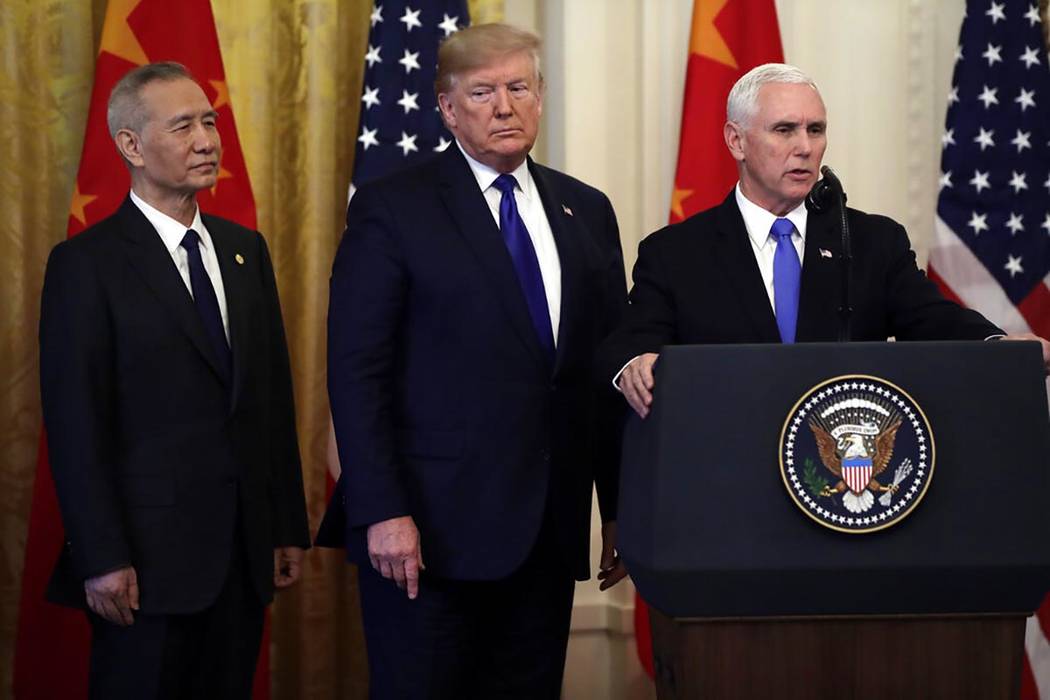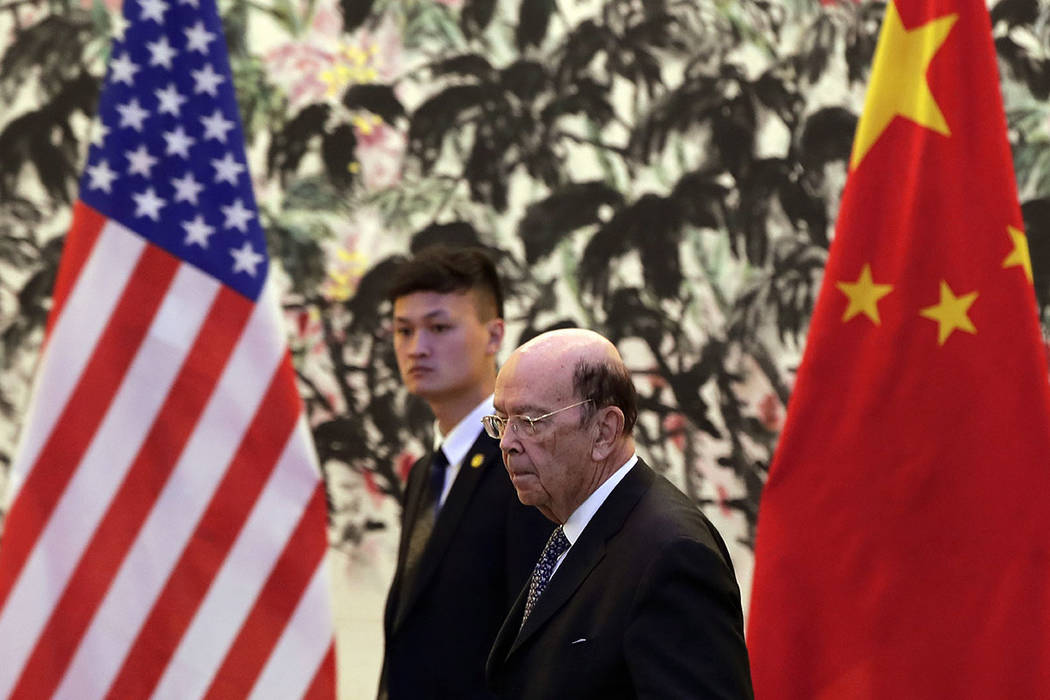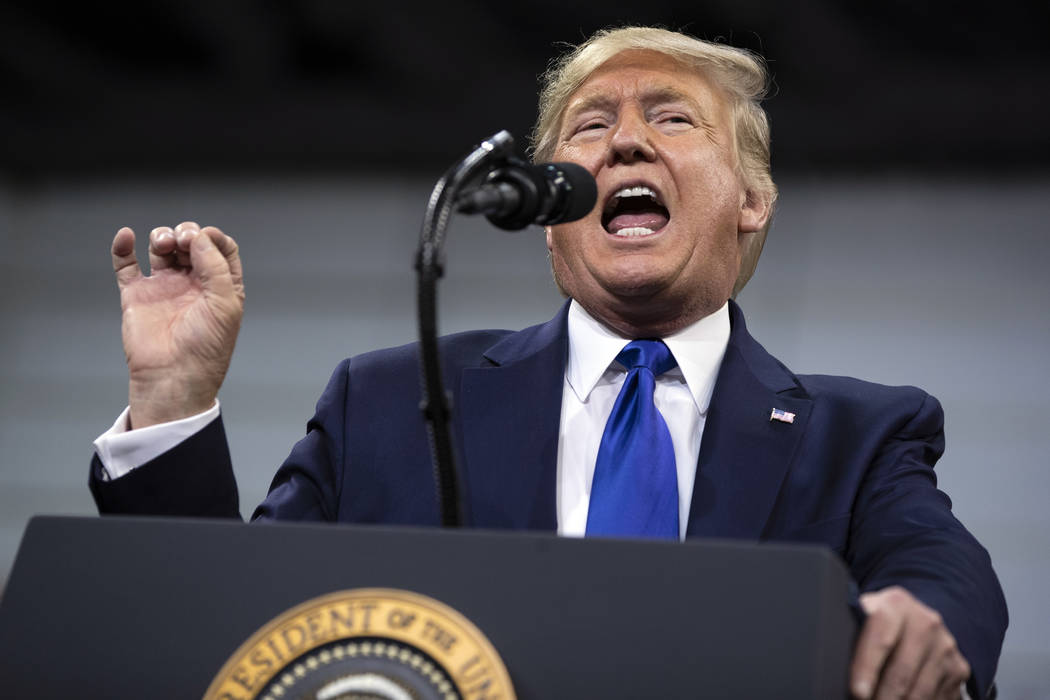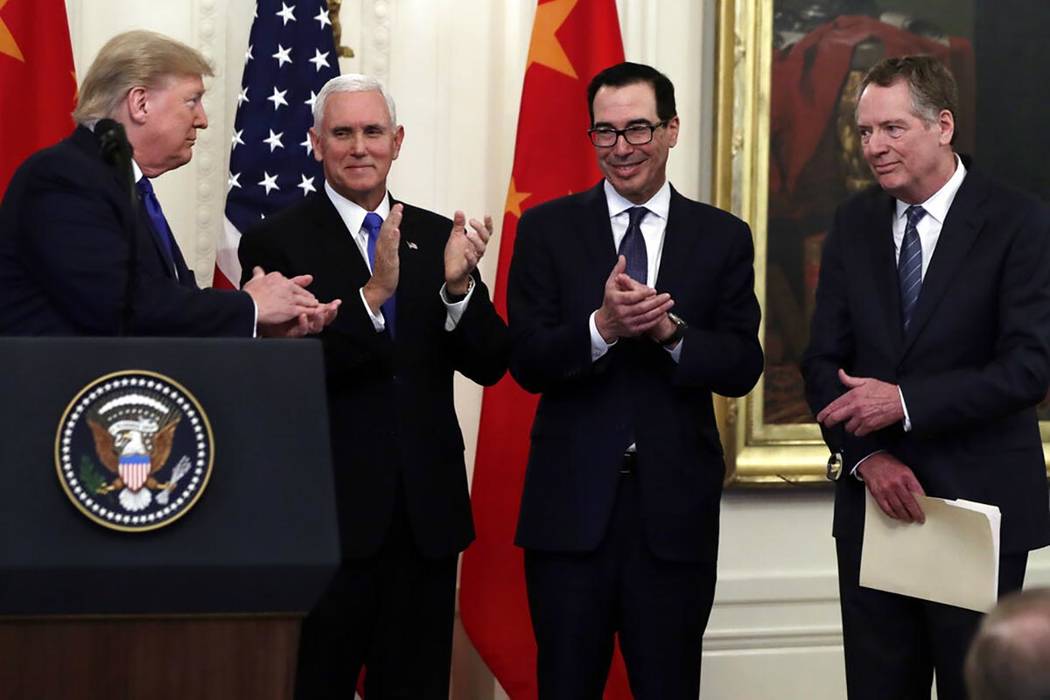Trump signs ‘Phase One’ of trade deal with China
WASHINGTON — President Donald Trump and Chinese Vice Premier Liu He signed phase one of a landmark trade deal between the United States and People’s Republic of China on Wednesday, making good on a key 2016 Trump campaign pledge.
“In June of 2016, in the great state of Pennsylvania, I promised that I would use every lawful presidential power to protect Americans from unfair trade and unfair trade practices,” Trump said. “Unlike those who came before me, I kept my promise. They didn’t promise too hard, but they didn’t do anything. And I actually think I more than kept my promise.”
China has agreed to boost its purchase of U.S. goods by $200 billion over two years, including buying an additional $32 billion of U.S. agriculture products.
The agreement includes a strong dispute resolution process designed to eliminate unfair trade practices. It also includes provisions to deal with intellectual property theft, with possible criminal penalties for violators.
Phase one also includes language to prevent forced technology transfer as a condition for doing business in China and the sale of counterfeit goods, as well as to restrict currency manipulation and resolve patent disputes.
According to a senior administration official, the White House agreed to reduce tariffs imposed Sept. 1 from 15 percent to 7.5 percent starting in 30 days.
At the same time, the senior administration official noted, China has not “made any specific commitment to adjust its tariffs or reduce its tariffs or eliminate its tariffs,” although Beijing agreed to “enforceable commitments to increase its purchases” in certain sectors.
Trump hailed the agreement as a boon for global relations outside of China and the United States, as well as a boost for the U.S. economy.
To his supporters, the deal affirmed Trump’s decision to use tariffs to pressure China. Earlier in the day, chief economic adviser Larry Kudlow told reporters that the pact is proof that tariffs work as a negotiating tool. “Tough tariffs brought us to the negotiating table,” he said.
The Dow Jones Industrial Average closed above 29,000 points — a nice opening for Trump in an election year.
On the bad news for a campaign front, the ceremony occurred ahead of an expected House vote to send articles of impeachment to the Senate and after House Speaker Nancy Pelosi’s announcement of her choice of seven impeachment managers.
At one point, Trump referred to the impeachment effort as a “hoax.”
Senate Minority Leader Chuck Schumer called the phase one agreement a “weak, feckless” deal.
Former Vice President Joe Biden panned the document before it was signed.
“China is the big winner of Trump’s ‘phase-one’ trade deal with Beijing. True to form, Trump is getting precious little in return for the significant pain and uncertainty he has imposed on our economy, farmers, and workers,” Biden said in a statement.
Farm Bureau head Zippy Duvall greeted the deal as “a great start to the new year, and an important step in giving America’s farmers and ranchers the ability to get back to business in the global market.”
U.S. Chamber CEO Thomas J. Donohue hailed the deal as providing “much needed certainty to American businesses as they begin the new year.”
“The Phase 1 agreement signals a rollback of the tit-for-tat tariff measures that have hurt American companies and consumers and includes important structural commitments from the Chinese,” Donohue added. “China’s commitments expand market access for American businesses in agriculture, manufacturing, and financial services; strengthen (intellectual property) protection and enforcement; and address unfair technology transfer practices.”
Ryan Young of the conservative Competitive Enterprise Institute said the pact “will diminish damage caused by any further tariffs, but it comes at a cost. American consumers and businesses will still pay tariffs on 40 percent of Chinese imports that were mostly tariff-free just a few years ago.”
Ahead of the signing, Trump made a series of rambling remarks as he recognized elected officials, dignitaries and business people gathered in the East Room and talked about his desire to visit China, as well as Mt. Rushmore to watch its July 4 fireworks, which he said he got approved despite wildfire worries.
For his part, Liu, the lead Chinese negotiator, noted that Chinese President Xi Jinping has said, “There are a thousand reasons to make China-U.S. relations succeed, and not a single one to let it fail.”
At one point before the agreement was reached, Trump had mused out loud that he would like to sign a pact alongside Xi in Iowa.
When the White House announced the deal on Dec. 13, Kudlow had anticipated a “ministerial signing” with U.S. Trade Representative Robert Lighthizer signing the measure with Liu.
Invited to speak by Trump, Lighthizer offered that the negotiations, the result of “two years of hard work,” were “tougher” than he had anticipated.
Looking at corporate titans in the room, Trump said upcoming Phase Two negotiations would open up China’s 1.5 billion people to all their companies.
Among the notables in the room were former Secretary of State Henry Kissinger, Fox Business Network host Lou Dobbs and the president’s largest political donors, Sheldon and Miriam Adelson, who got a shoutout from the president.
The Review-Journal is owned by the family of Las Vegas Sands Corp. Chairman and CEO Sheldon Adelson.
Contact Debra J. Saunders at dsaunders@reviewjournal.com or 202-662-7391. Follow @DebraJSaunders on Twitter.
A previous version of this story misstated Senate Minority Leader Chuck Schumer’s title.






















